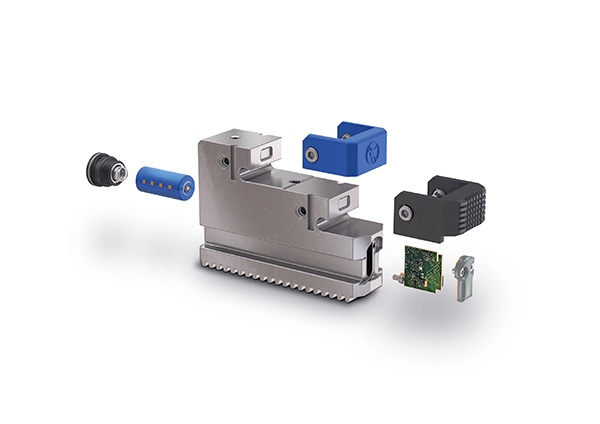
Röhm’s new iJaw clamping jaw allows the clamping force to be measured in real time during machining. The company says it therefore solves a problem for which there has been no accepted industrial solution up to now: that the correct setting of clamping force relies on operator experience.
Errors during machining due to incorrect clamping force or workpiece loss are thus pre-programmed. The Röhm iJaw integrates sensor technology for clamping force measurement, as well as wireless data transmission. Measurement takes place directly at the clamping point to the workpiece; data transmission to a gateway makes use of the upcoming industry-standard IO-Link Wireless. The gateway can connect to the machine control system via the integrated PROFINET interface and/or send the data to a cloud via the integrated LAN interface.
“We’ve identified seven very different scenarios in which the iJaw offers significant added value,” says Claus Faber, head of product management and marketing at Röhm.
The first three scenarios are about the ‘feeling’ before and during machining. Before machining, iJaw assists in feeding workpieces and setting up the clamping system. If errors occur, the measured clamping forces deviate from the target values and a manual or automated reaction can be initiated. During machining, clamping forces that are too high (risking workpiece damage) and clamping forces that are too low (insufficient to hold the workpiece) can be detected.
Further scenarios offer solutions for the evaluation of series and serial measurements. Here, the changing of clamping forces can be used to detect trends at an early stage. This includes the early detection of upcoming maintenance to maintain the clamping force or the wear of tools.
For further information
www.roehm.biz















